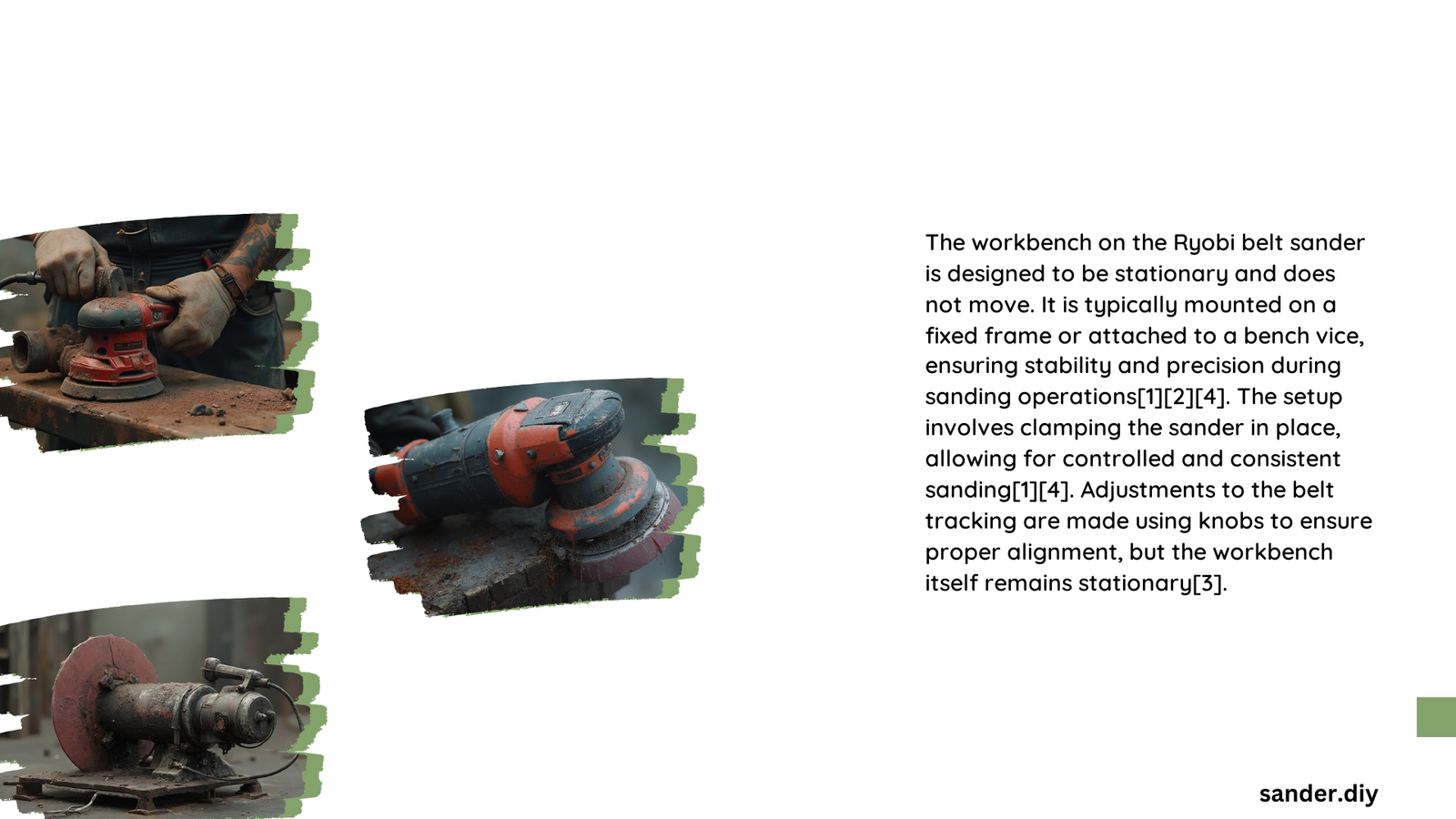The Ryobi Belt Sander offers remarkable workbench mobility, featuring a versatile design that allows users to adjust the belt arm and work table across multiple angles. Woodworkers can seamlessly transition between horizontal and vertical positions, with precise 0°-90° belt arm positioning and 0°-45° table tilt, providing unprecedented flexibility for various sanding applications.
What Makes the Ryobi Belt Sander Workbench Movable?
The Ryobi Belt Sander workbench is engineered with multiple adjustment mechanisms that enable significant mobility and positioning versatility. Here are the key features that contribute to its movability:
Belt Arm Positioning Flexibility
- Angle Range: 0° to 90° adjustment
- Mechanism: Loosening specific screws allows complete repositioning
- Tools Required: Provided Allen wrench for secure locking
Work Table Mobility Options
| Feature | Adjustment Range | Functionality |
|---|---|---|
| Table Tilt | 0°-45° | Enables angled sanding operations |
| Work Support | Adjustable Bracket | Prevents workpiece movement |
| Miter Gauge | 0°-45° | Supports precise angled cuts |
Stability Considerations
While the workbench offers extensive mobility, Ryobi has incorporated design elements to maintain stability:
– Cast iron base reduces vibration
– Precise screw-locking mechanisms
– Large belt tracking knob for consistent positioning
How to Adjust the Ryobi Belt Sander Workbench?

Adjusting the workbench requires a systematic approach:
- Belt Arm Adjustment
- Locate the two mounting screws
- Use provided Allen wrench
- Loosen screws carefully
- Reposition to desired angle (0°-90°)
-
Retighten screws securely
-
Work Table Tilt
- Identify table adjustment mechanism
- Gently move table within 0°-45° range
- Ensure stable locking at desired angle
What Are the Precise Measurement Specifications?
- Work Table Size: 8-1/2″ x 5-3/4″
- Belt Tilt Range: 0°-90°
- Table Tilt Range: 0°-45°
- Base Material: Cast Iron
Why Workbench Mobility Matters for Woodworkers?
The ability to move and adjust the workbench provides critical advantages:
– Enhanced versatility in sanding projects
– Ability to tackle complex angles
– Improved ergonomics
– Increased precision in woodworking tasks
Expert Tips for Optimal Workbench Movement
- Always use provided tools for adjustments
- Check locking mechanisms before operation
- Maintain consistent pressure during repositioning
- Lubricate adjustment points periodically
Potential Limitations
- Repeated adjustments might require occasional re-calibration
- Ensure smooth movement to prevent mechanical stress
Maintenance for Long-Term Mobility
- Clean adjustment points regularly
- Apply light machine oil to moving parts
- Check for any loose screws or components
- Store in a dry environment
Reference:
– Ryobi Tools Support
– Woodworking Tool Review Site
– Sander Maintenance Guide
